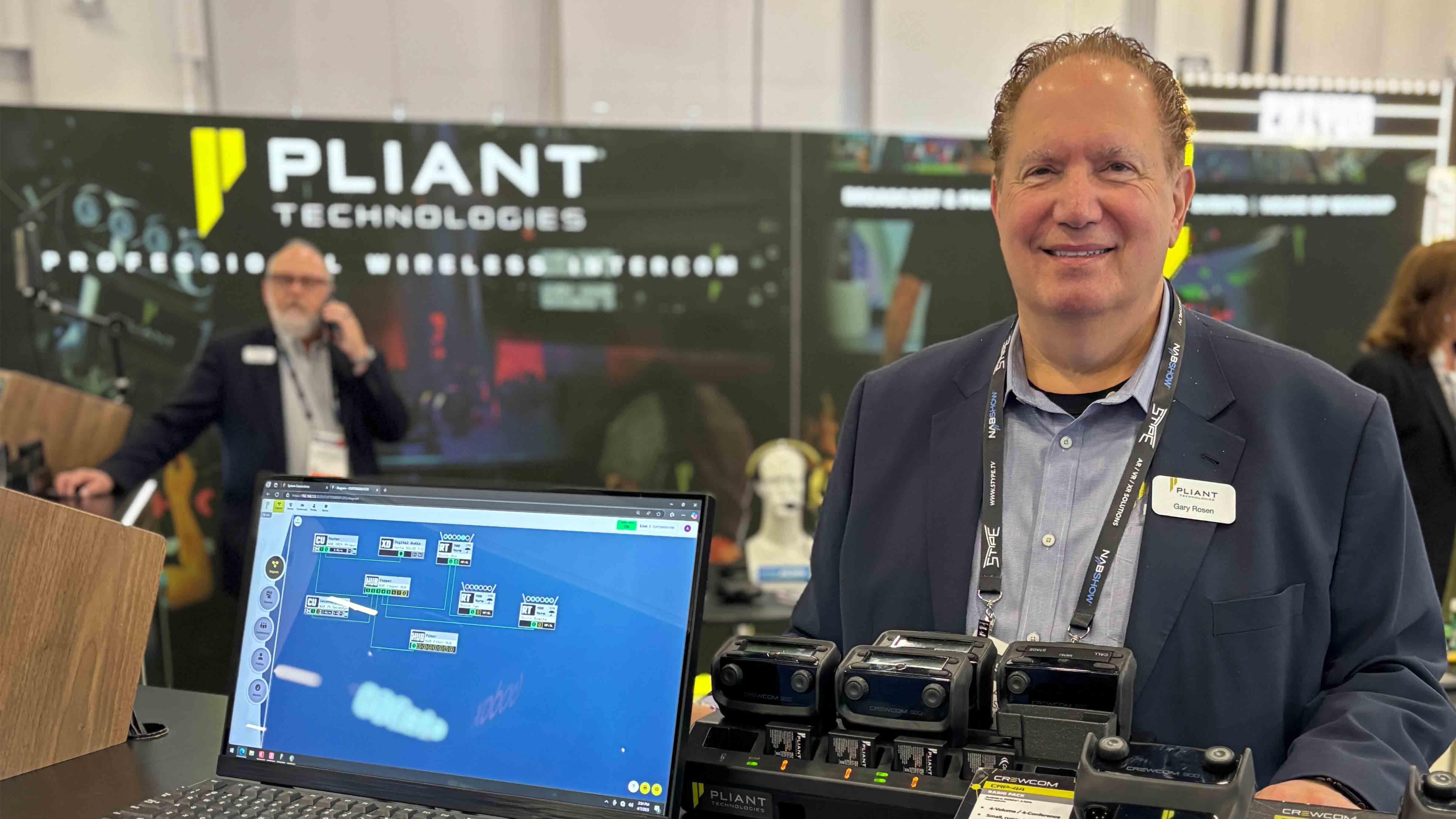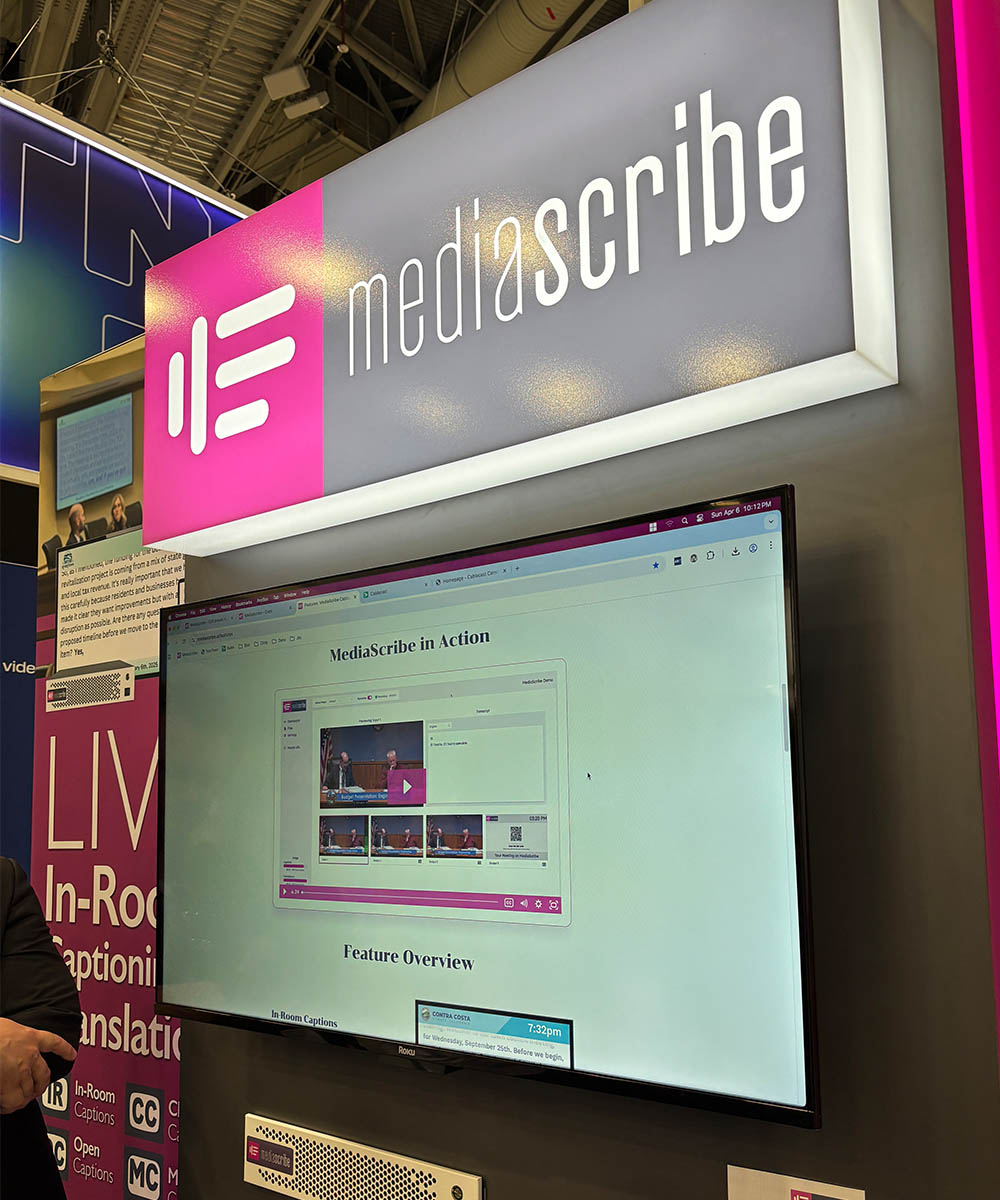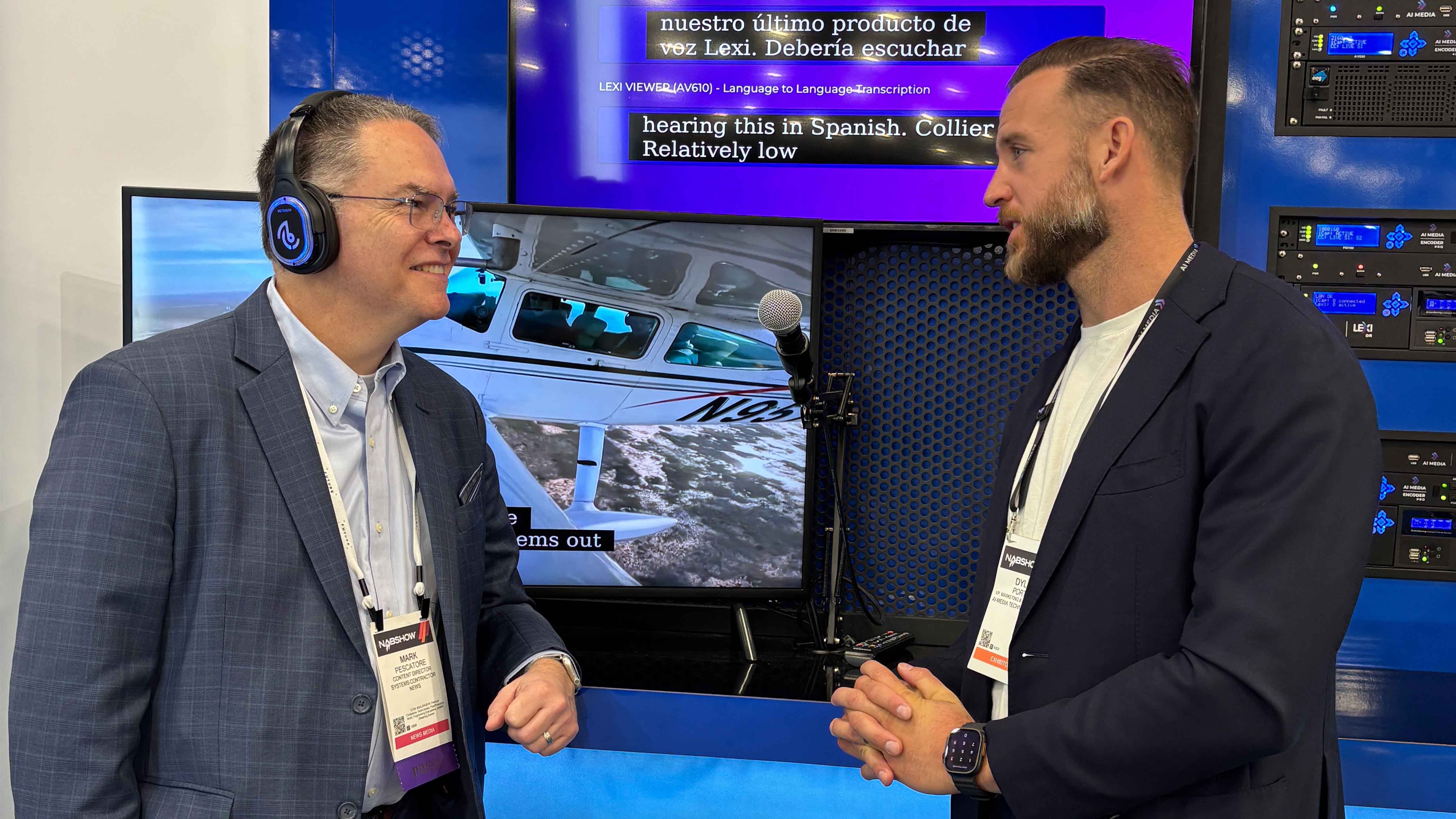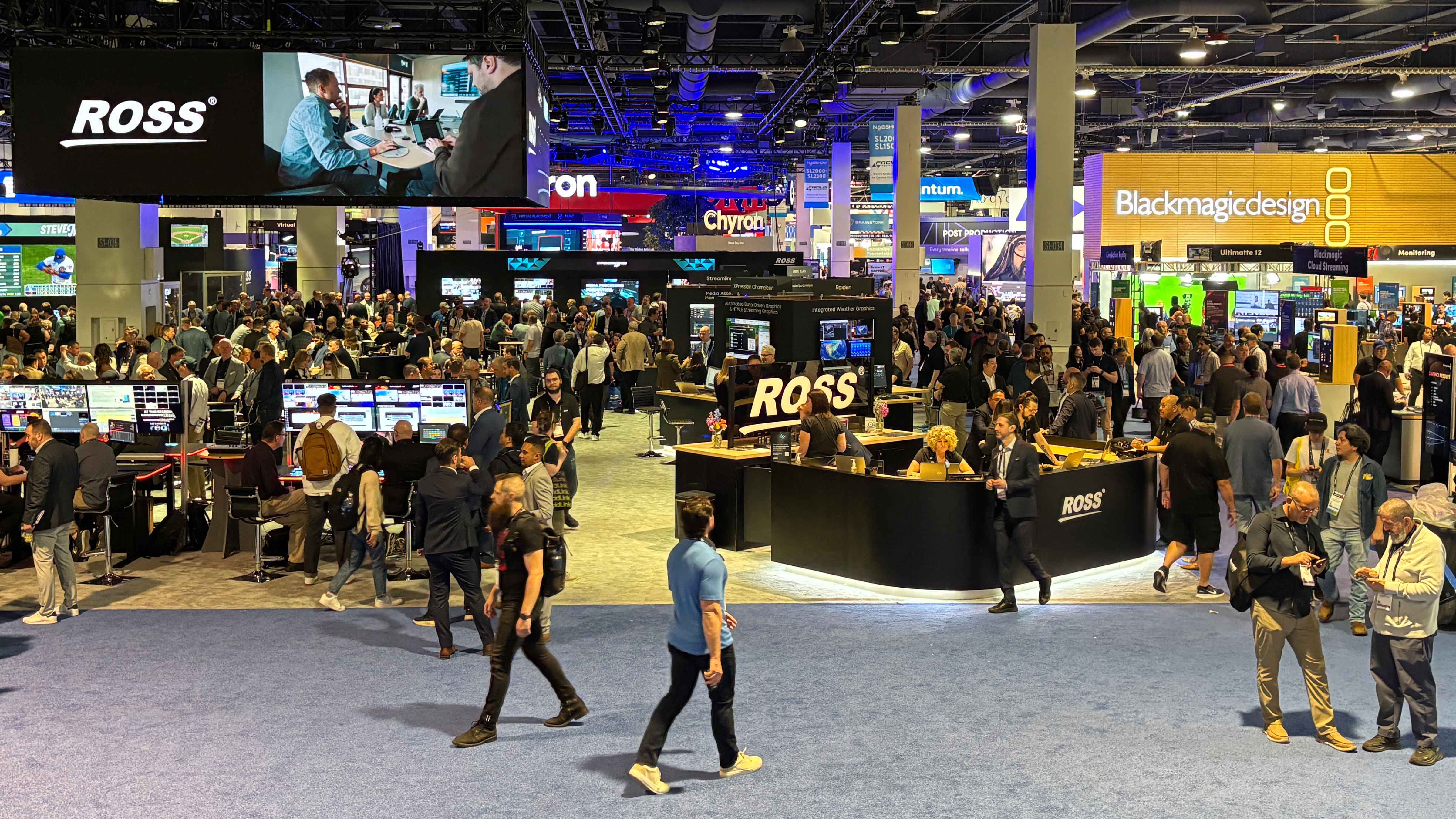According to show officials, the 2025 NAB Show, which relinquished the Las Vegas Convention Center on April 9, attracted 55,000 registered attendees from 160 countries. About a quarter of attendees came from outside the United States and more than half of participants registered for the show for the first time. Across the exhibit hall, which was open April 6-9, there were almost 1,100 exhibitors, including 125 first timers.
Overall, attendance numbers were lower than in 2023 and 2024 but higher than 2022, when the show returned after a two-year, pandemic-induced hiatus. Continuing renovations to the LVCC forced the show to be spread across the West, North, and South Halls, so attendees definitely got their steps. Here are a few of the highlights from the show for the Pro AV crowd.
Tariff Talk
While maybe not a dark cloud over what was an active, upbeat show, tariffs were certainly a nasty patch of gloom hanging out by nearby Red Rock Canyon, a system that could bring lingering storms or dissipate with little more than a soft spring shower. Unfortunately, not even the best meteorologist can predict with any certainty where this business weather pattern will go.
It's the topic where everyone wants clarity and nobody has it. Some companies I approached wouldn't talk about tariffs on the record—and with the instability swirling around the topic I don't blame them. I mean, President Trump imposed tariffs on April 2 and the stock market tanked. On the last day of the show, he announced a pause on most tariffs, and that news delivered one of the best days in stock market history. Then, while many of us were traveling back home, the stock market dropped again.
Basically, companies are tracking what's happening in the market (or some variation on that theme). Fair enough.
[Tariffs and Pro AV: Expectations and Strategies]
Like most Pro AV manufacturers, Audinate is trying to navigate its manufacturing efforts based on tariff announcements. The company's conscious decision to emphasize software-based solutions during the pandemic to avoid supply chain issues has certainly helped. According to Josh Rush, chief marketing officer, in the first half of Audinate’s fiscal year, the company shipped more software units than hardware units.

Gary Rosen, VP of sales for Pliant Technologies, put to voice what many in the Pro AV industry are likely feeling. "Tariffs are concerning," he said, "but as concerning is the lack of clarity and what it all means." Pliant has some U.S. manufacturing but also relies on manufacturing in Korea and China. So, what's included—are we talking components or finished products or both? And, most importantly, what will the impact of tariffs be on customers?
Convergence Continues
Convergence remains a driving trend within the Pro AV and broadcast verticals, with technology solutions flowing back and forth between the two industries. For example, Drew Buttress, senior product manager for Sony, sees corporate and educational environments wanting broadcast-quality cameras. Meanwhile, some of the virtual production technology that was demonstrated on the show floor has its roots in Pro AV.
"It's really where we live at the moment," explained Chris Merrill, director of product management for Panasonic Connect. About half of product development is coming from outside the broadcast environment, he added, and content creation expectations continue to move toward replicating the quality of content being produced for television. "We get to make that easier to accomplish," he noted.
"True convergence is here and it's happening," said Kevin Henneman, president of KMH Integration. He thinks the IPMX AVoIP standard is key to the convergence of the two industries. "It truly will blend and create a true interoperability between Pro AV and broadcast," he predicted.
In other words, expect to see the line between Pro AV and broadcast continue to be blurred, stepped over, and generally ignored for the foreseeable future.
AI Voice Translation
Last year, Bill Bennett at ENCO Systems gave me a demo of SPECai. He filled in a few data points in a GUI and within a few seconds the system spit out a couple of scripts for radio commercials. Pretty cool. But then the system produced radio-ready spots of those scripts using an AI voiceover that didn't sound, well, like an AI voiceover. Very cool.

Apparently, large language models (LLMs) got really good over the past year. As a result, several other companies exhibiting at the 2025 NAB Show were showcasing their own AI-powered solutions for live captions as well as audio translations with voices that sound more like human talent.
[NAB Show 2025 Notebook: 5 Booths to Add to Your Must-See List]
"Translation is riding the coattails of the AI revolution," declared Ray Tiley, CTO of Tightrope Media Systems, which showcased its new MediaScribe hybrid service at the show. Designed to improve meeting accessibility for local governments, MediaScribe combines a hardware interface with cloud-based AI services to convert speech into text, which can be displayed as closed captions on cable channels, open captions for in-room displays, and mobile captions on personal devices. It supports real-time translations in dozens of languages, and allows users to create a custom vocabulary to help with challenging names and locations.
3Play Media unveiled Dubbing, its customizable translation solution. AI is the starting point for the service; 3Play Media couples it with human correction, so it's not a real-time solution. But it's still more affordable than traditional translation with human transcribers, and it supports multiple languages and dialects. The company is targeting high-end media and elearning, among other verticals. "This is possible because AI voices are so good," explained Lily Bond, chief growth officer for 3Play Media.
Dylan Porter, VP of marketing and partnerships for AI-Media, agreed that AI voice technology has "skyrocketed" in a very short time. AI-Media is focused on helping broadcasters and other content creators break the language barrier and increase their reach with LEXI Voice, its new AI voice translation technology. Built on the company's flagship LEXI captioning solution, it provides AI voice translations that sound natural—and delivers those translations with very low latency for live events. "Voice is a natural extension of what we're already doing," he added.

Does this mean real-time AI translation is the elusive AI “killer app” we’ve all been looking for? I'm not ready to make that declaration, but the technology is certainly making significant strides for accessibility as well as content monetization in markets.

